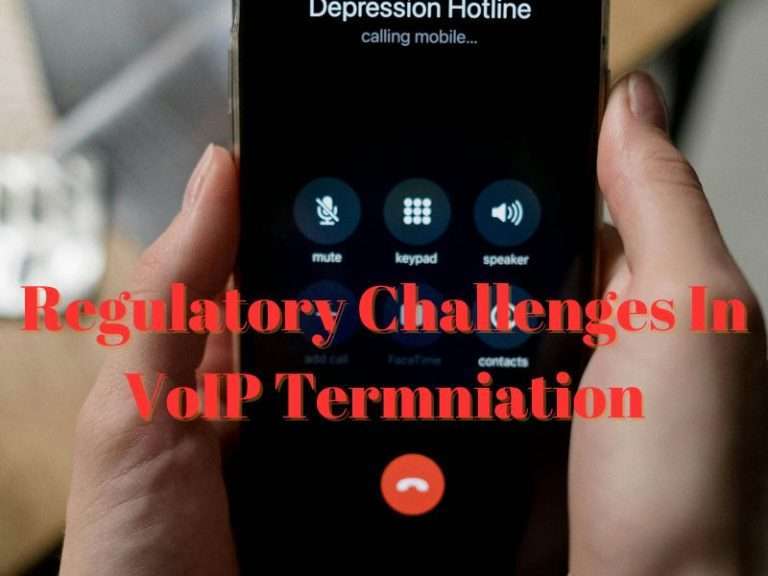Key takeaways: VOIP VS. PSTN FOR DID
Direct Inward Dialing (DID): VoIP V/S PSTN for DID A telephone service that allows incoming calls to be routed directly to individual extensions or departments within an organization.
Voice over Internet Protocol (VoIP): A technology that enables voice communication over the internet, offering cost-effective and feature-rich telephony solutions.
Public Switched Telephone Network (PSTN):The traditional circuit-switched telephone network, widely used for landline and mobile communications.
Business Phone System: A centralized communication platform that facilitates internal and external communication within an organization.
Cloud Communication: A method of delivering communication services, such as voice and messaging, over the internet, allowing for increased flexibility and scalability.
Traditional Phone System: Telephone systems that rely on physical infrastructure, such as copper wires or fiber optic cables, to transmit voice signals.
Introduction to VoIP and PSTN for DID
In today’s fast-paced business environment, effective communication is paramount. Direct Inward Dialing (DID) numbers have become a crucial component of modern telephony, allowing businesses to route incoming calls directly to specific extensions or departments.
However, the decision between integrating DID number with VoIP V/S PSTN for DID can significantly impact business operations.

Advantages of VoIP for DID
Integrating DID numbers with a VoIP system offers numerous advantages for businesses seeking cost-effective and feature-rich communication solutions.
One of the primary benefits of VoIP is its ability to provide substantial cost savings compared to traditional PSTN lines. By leveraging the internet for voice transmission, VoIP eliminates the need for expensive phone line rentals and long-distance charges.
Moreover, VoIP systems often come equipped with advanced features that can enhance productivity and customer experience. These may include call recording, voicemail transcription, video conferencing capabilities, and seamless integration with Customer Relationship Management (CRM) systems.

Advantages of PSTN for DID
While VoIP offers compelling advantages, the traditional PSTN should not be overlooked, particularly for businesses that prioritize reliability and have limited internet connectivity. The PSTN has been the backbone of telephony for decades, providing a tried-and-true infrastructure that is less susceptible to internet outages or quality fluctuations.
For businesses operating in areas with unreliable or limited internet access, the PSTN may prove to be a more dependable solution for DID integration. Additionally, in some cases, the initial setup costs for a PSTN-based system may be lower than those associated with implementing a VoIP infrastructure.

Factors to Consider When Choosing VoIP or PSTN for DID
When determining the optimal solution for integrating DID numbers, businesses should carefully evaluate their unique requirements and circumstances. Key factors to consider include:
Cost: Conduct a thorough cost analysis, taking into account initial setup expenses, ongoing maintenance fees, and potential long-term savings offered by each system.
Features: Assess the specific features required by your business and ensure that the chosen system can meet those needs effectively.
Reliability: Evaluate the stability and reliability of your internet connection if considering VoIP, and weigh the importance of redundancy and failover mechanisms.
Scalability: Consider the growth potential of your business and the ability of each system to accommodate future expansion seamlessly.
Integration: Examine the compatibility of each system with existing business applications, such as CRM software or other communication tools.
By carefully weighing these factors, businesses can make an informed decision that aligns with their budgetary constraints, operational requirements, and long-term growth objectives.

Conclusion: VOIP VS. PSTN FOR DID
- In the ever-evolving landscape of business communication, the integration of Direct Inward Dialing (DID) numbers with either Voice over Internet Protocol (VoIP) or the Public Switched Telephone Network (PSTN) presents a pivotal decision for organizations. Both solutions offer distinct advantages and cater to different business needs.
- For businesses seeking cost-effective and feature-rich communication solutions, VoIP emerges as a compelling choice. By leveraging the internet for voice transmission, VoIP systems can significantly reduce telephony expenses while providing advanced features such as call recording, voicemail transcription, and video conferencing capabilities. Additionally, the inherent mobility and flexibility of VoIP solutions enable seamless communication from anywhere with an internet connection.
- On the other hand, the traditional PSTN continues to be a reliable and time-tested option for businesses operating in areas with limited or unreliable internet connectivity. The PSTN’s established infrastructure ensures consistent call quality and minimizes the risk of disruptions caused by internet outages. Furthermore, in certain scenarios, the initial setup costs for a PSTN-based system may be lower than those associated with implementing a VoIP infrastructure.
- Ultimately, the choice between VoIP and PSTN for DID integration hinges on a careful evaluation of each business’s unique requirements, budget constraints, and growth objectives. By considering factors such as cost, features, reliability, scalability, and integration with existing systems, organizations can make an informed decision that aligns with their specific needs and positions them for long-term success in an increasingly competitive business landscape.
FAQs: VOIP VS. PSTN FOR DID
Q: Can DID numbers work with both VoIP and PSTN systems?
A: Yes, Direct Inward Dialing (DID) numbers can be integrated with both Voice over Internet Protocol (VoIP) and Public Switched Telephone Network (PSTN) systems. The choice between VoIP and PSTN for DID integration depends on various factors specific to each business.
Q: What are the main benefits of using VoIP for DID integration?
A: The primary benefits of using VoIP for DID integration include cost savings, advanced features (such as call recording and video conferencing), mobility, and scalability. VoIP systems can significantly reduce telephony expenses by leveraging the internet for voice transmission and eliminating the need for expensive phone line rentals.
Q: Is VoIP suitable for businesses with limited or unreliable internet connectivity?
A: In areas with limited or unreliable internet connectivity, the traditional PSTN may be a more suitable option for DID integration. VoIP systems rely heavily on a stable and high-speed internet connection to ensure consistent call quality and reliability.
Q: Can VoIP and PSTN systems be combined for DID integration?
A: Yes, it is possible to combine VoIP and PSTN systems for DID integration, creating a hybrid solution that leverages the benefits of both technologies. This approach can provide redundancy and failover mechanisms, ensuring uninterrupted communication even in the event of internet outages or quality fluctuations.
Q: How can businesses determine the most suitable solution for their DID integration needs?
A: To determine the most suitable solution, businesses should carefully evaluate their specific requirements, budget constraints, and growth objectives. Factors to consider include cost, required features, reliability, scalability, and integration with existing business applications. Consulting with experienced communications providers can also provide valuable insights and guidance.
Additional Readings on DID:
- Guide to Direct Inward Dialing (DID) in Telecommunications
- Ultimate guide to set up DID
- Comparing Direct Inward Dialing Providers
- DID boosting productivity Efficiency
- Trouble Shooting Common Issues in DID
- Advanced DID Features
- Future of DID: Trends & Predictions
- Cost effective DID
- DID Numbers: Unlocking business Growth
- The Evolution of DID Jobs
- Integrating DID with VOIP
- Cloud-hosted VoIP & DID
- IP PBX and SIP Trunk
Back To The Blog PageClick Here To Know More
Our Popular Blog Posts

Before and After: Company X’s Communication Evolution with DID
Key takeaways: Before And After Using DID
Here, we can say what were the consequences of company… Read More

IP PBX And SIP Trunking With DID
Key takeaways : IP PBX And SIP Trunking
Streamlining Communications: Embrace the efficiency of IP PBX… Read More

Cloud-hosted Voip And Did
KEY TAKEAWAYS: CLOUD-HOSTED VoIP and DID
Cost-Effectiveness: Embrace the affordability of cloud-hosted… Read More

WhatsApp SMS for Business: Boosting Communication
Key takeaways : Whatsapp SMS for Business
In an era where instant messaging is king, WhatsApp SMS for… Read More

Integrating DID With VoIP Systems
Key takeaways: Integrating DID With VoIP
Streamlined Call Routing: Integrating DID With VoIP automatically… Read More

The Rise Of AI In VoIP
Key takeaways : Rise Of AI In VoIP
Innovative AI Applications: Rise of AI In VoIP AI seems like virtual… Read More

Impact Of 5G On VoIP Services
Key Takeaways: The Revolutionary Impact of 5G on Wholesale VoIP Services
Revolutionized Call Quality… Read More

Sustainability In SMS Marketing
Key takeaways on sustainability In SMS Marketing
Eco-Conscious Engagement: Harnessing Sustainability… Read More

Cross-Country SMS Wholesale Challenges
Key takeaways for Cross Country SMS wholesale challenges
Navigating Regulations: for cross country SMS… Read More

Regulatory Challenges In VoIP Termination
Key takeaways for Regulatory Challenges in VoIP Termination
Navigating a Maze of Regulations: Understanding… Read More

